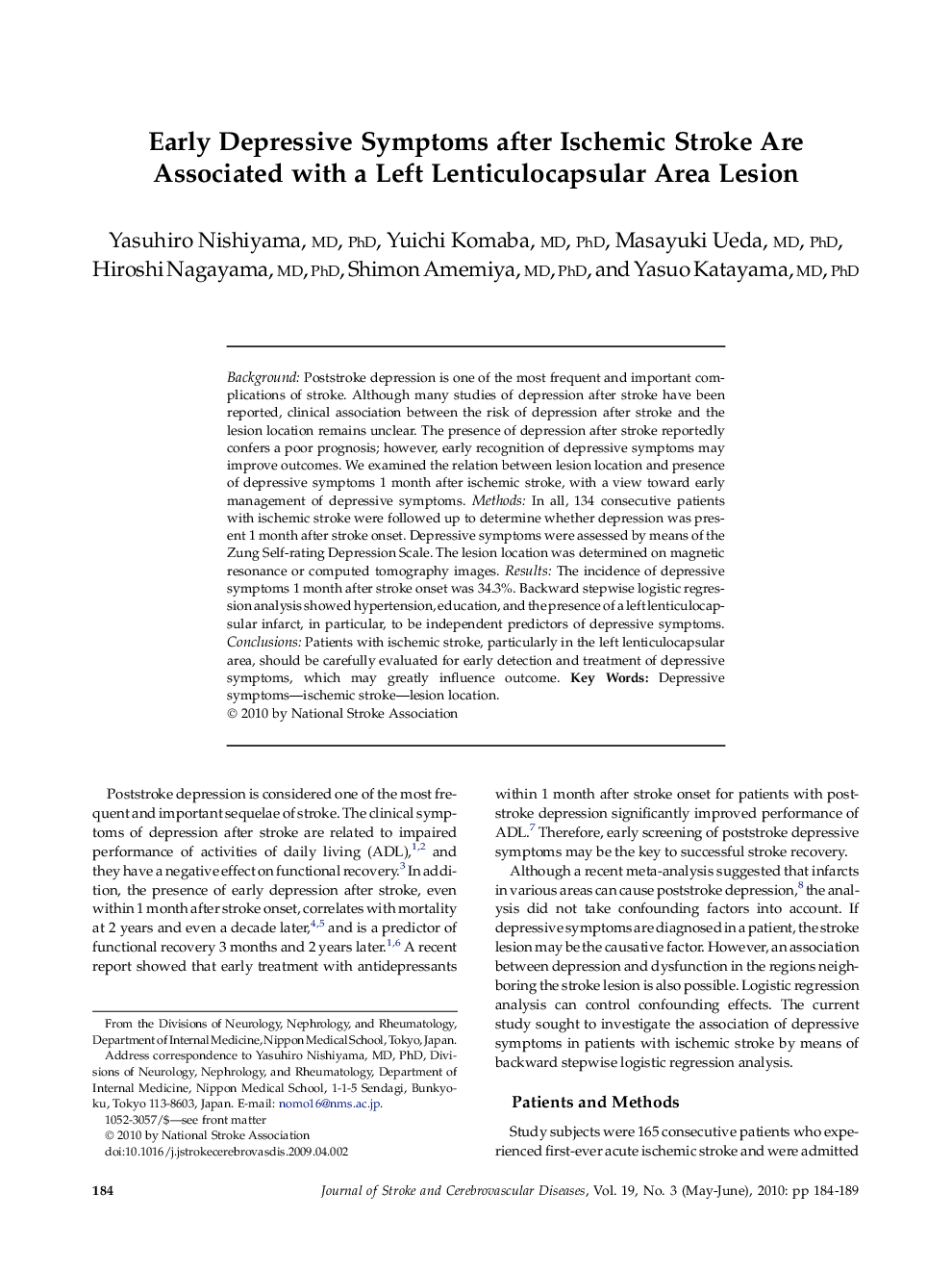| Article ID | Journal | Published Year | Pages | File Type |
|---|---|---|---|---|
| 2704595 | Journal of Stroke and Cerebrovascular Diseases | 2010 | 6 Pages |
BackgroundPoststroke depression is one of the most frequent and important complications of stroke. Although many studies of depression after stroke have been reported, clinical association between the risk of depression after stroke and the lesion location remains unclear. The presence of depression after stroke reportedly confers a poor prognosis; however, early recognition of depressive symptoms may improve outcomes. We examined the relation between lesion location and presence of depressive symptoms 1 month after ischemic stroke, with a view toward early management of depressive symptoms.MethodsIn all, 134 consecutive patients with ischemic stroke were followed up to determine whether depression was present 1 month after stroke onset. Depressive symptoms were assessed by means of the Zung Self-rating Depression Scale. The lesion location was determined on magnetic resonance or computed tomography images.ResultsThe incidence of depressive symptoms 1 month after stroke onset was 34.3%. Backward stepwise logistic regression analysis showed hypertension, education, and the presence of a left lenticulocapsular infarct, in particular, to be independent predictors of depressive symptoms.ConclusionsPatients with ischemic stroke, particularly in the left lenticulocapsular area, should be carefully evaluated for early detection and treatment of depressive symptoms, which may greatly influence outcome.
